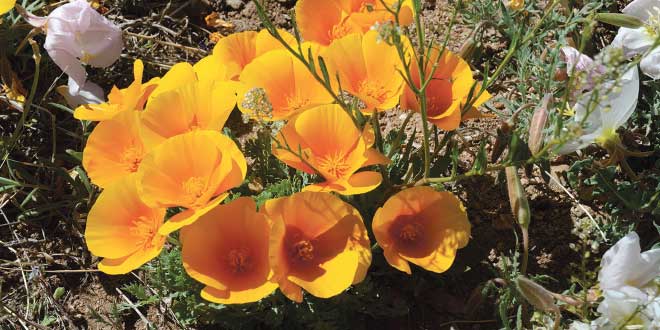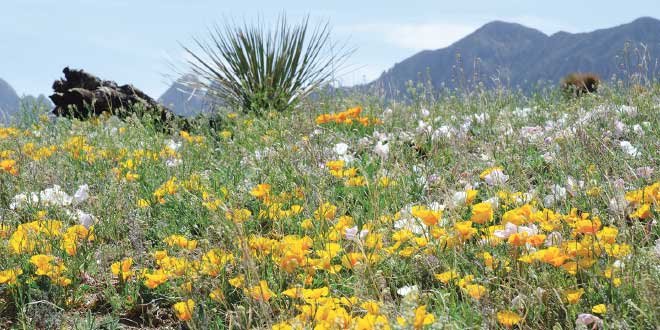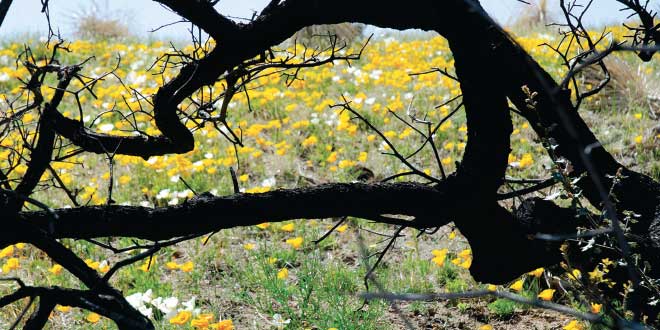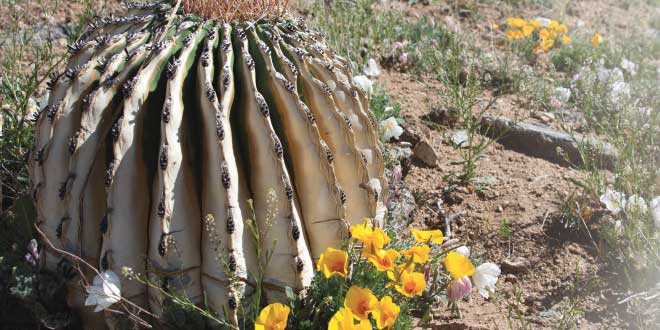If you’re planning a visit to southern New Mexico this spring, you may be lucky enough to see the foothills of the San Andres mountains blanketed in orange. That’s the vibrant color of the Mexican poppy, an annual wildflower that can seemingly cover an area in certain years.

Why don’t we see Mexican poppy blooms every year? The answer — the same to most questions about life in the desert — is precipitation. Specifically, the timing of rains is crucial. Mexican poppy requires a good (around 1-inch) rain in the fall to trigger their germination. It looks like they received what they needed this year, but it won’t happen every year, making these large bloom events more special.
And have you ever wondered why they’re called “poppies?” What exactly is “popping” about them? Once they mature, Mexican poppy will produce a small, elongated fruit called a capsule. When “ripe,” that capsule will split longitudinally down the middle and can fling its many, black seeds as far as six feet away. No wonder it can spread over areas easily!

While its hillside coverage can provide cover for small birds, Mexican poppy’s biggest benefit is to pollinators, especially bees. That is, apart from the psychological benefit provided to those who stop to observe this desert beauty.
My colleague Ross Morgan and I had the opportunity to view and photograph the poppies last year. These photos were taken on the northside of Hwy. 70 just below San Augstin Peak.

 New Mexico Wildlife magazine Conserving New Mexico's Wildlife for Future Generations
New Mexico Wildlife magazine Conserving New Mexico's Wildlife for Future Generations
